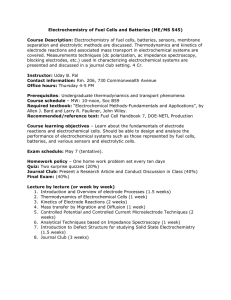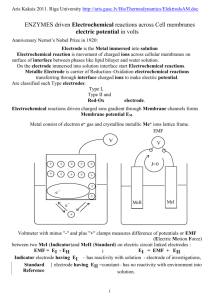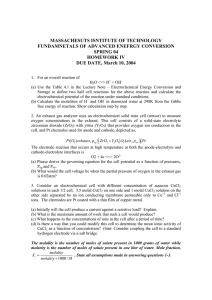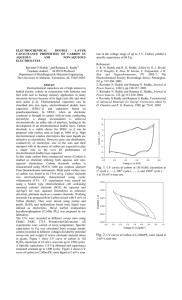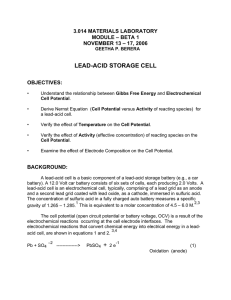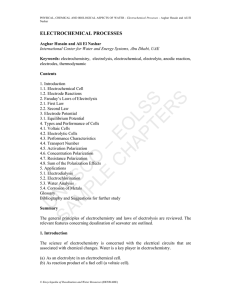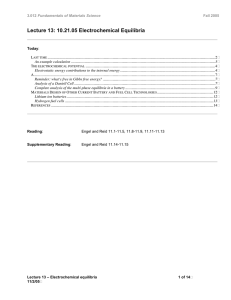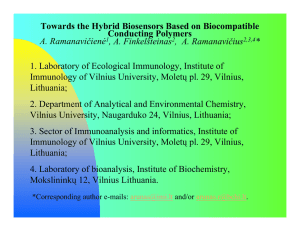Nernst equation, electrochemical series
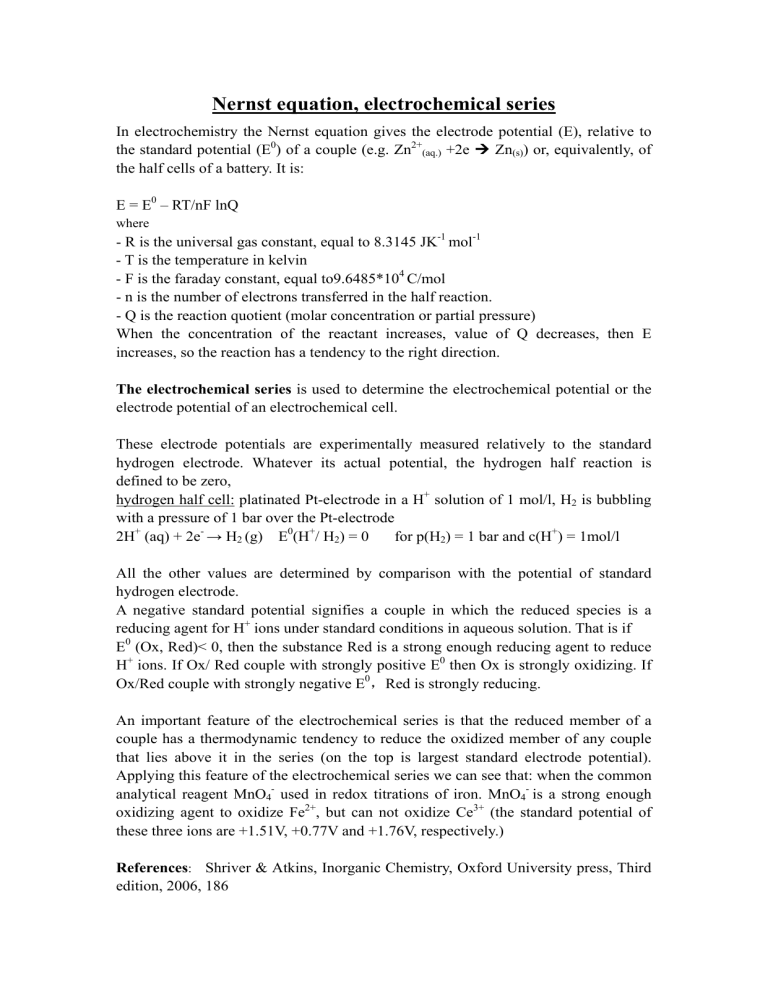
Nernst equation, electrochemical series
In electrochemistry the Nernst equation gives the electrode potential (E), relative to the standard potential (E 0 ) of a couple (e.g. Zn 2+
(aq.)
+2e ¼ Zn
(s)
) or, equivalently, of the half cells of a battery. It is:
E = E 0 – RT/nF lnQ where
- R is the universal gas constant, equal to 8.3145 JK -1 mol -1
- T is the temperature in kelvin
- F is the faraday constant, equal to9.6485*10 4 C/mol
- n is the number of electrons transferred in the half reaction.
- Q is the reaction quotient (molar concentration or partial pressure)
When the concentration of the reactant increases, value of Q decreases, then E increases, so the reaction has a tendency to the right direction.
The electrochemical series is used to determine the electrochemical potential or the electrode potential of an electrochemical cell.
These electrode potentials are experimentally measured relatively to the standard hydrogen electrode. Whatever its actual potential, the hydrogen half reaction is defined to be zero, hydrogen half cell: platinated Pt-electrode in a H + solution of 1 mol/l, H
2
is bubbling with a pressure of 1 bar over the Pt-electrode
2H + (aq) + 2e - → H
2
(g) E 0 (H + / H
2
) = 0 for p(H
2
) = 1 bar and c(H + ) = 1mol/l
All the other values are determined by comparison with the potential of standard hydrogen electrode.
A negative standard potential signifies a couple in which the reduced species is a reducing agent for H + ions under standard conditions in aqueous solution. That is if
E 0 (Ox, Red)< 0, then the substance Red is a strong enough reducing agent to reduce
H + ions. If Ox/ Red couple with strongly positive E 0 then Ox is strongly oxidizing. If
Ox/Red couple with strongly negative E 0 , Red is strongly reducing.
An important feature of the electrochemical series is that the reduced member of a couple has a thermodynamic tendency to reduce the oxidized member of any couple that lies above it in the series (on the top is largest standard electrode potential).
Applying this feature of the electrochemical series we can see that: when the common analytical reagent MnO
4
used in redox titrations of iron. MnO oxidizing agent to oxidize Fe 2+ , but can not oxidize Ce
4
- is a strong enough
3+ (the standard potential of these three ions are +1.51V, +0.77V and +1.76V, respectively.)
References : Shriver & Atkins, Inorganic Chemistry, Oxford University press, Third edition, 2006, 186
